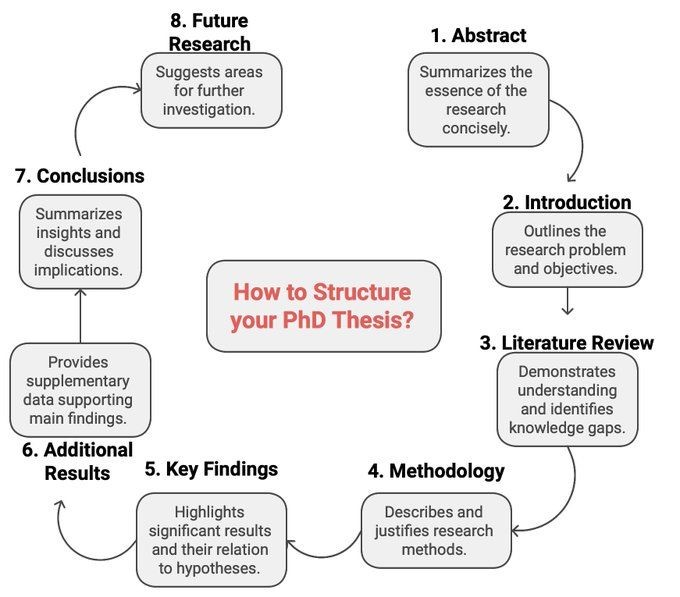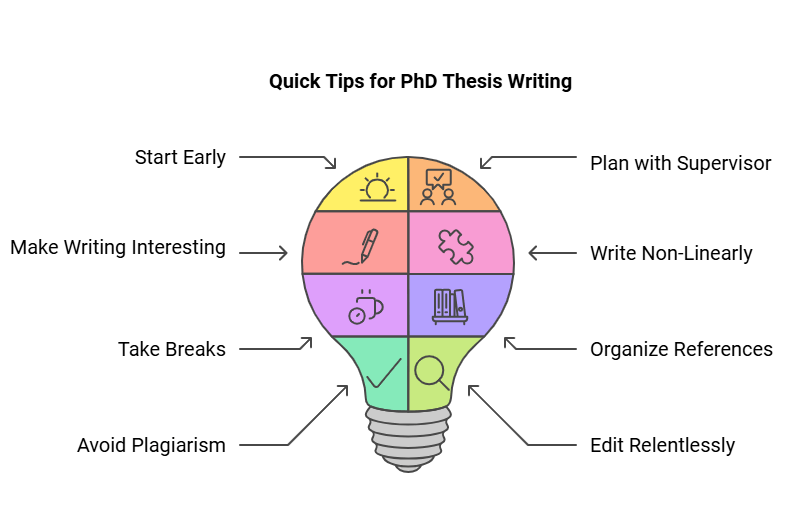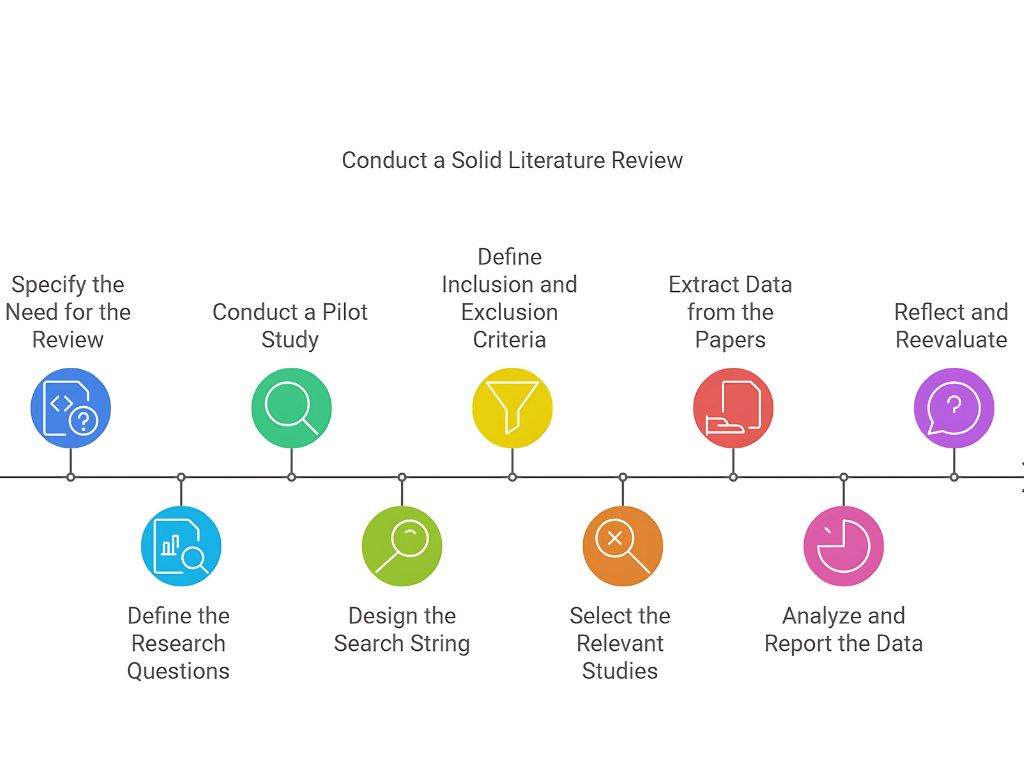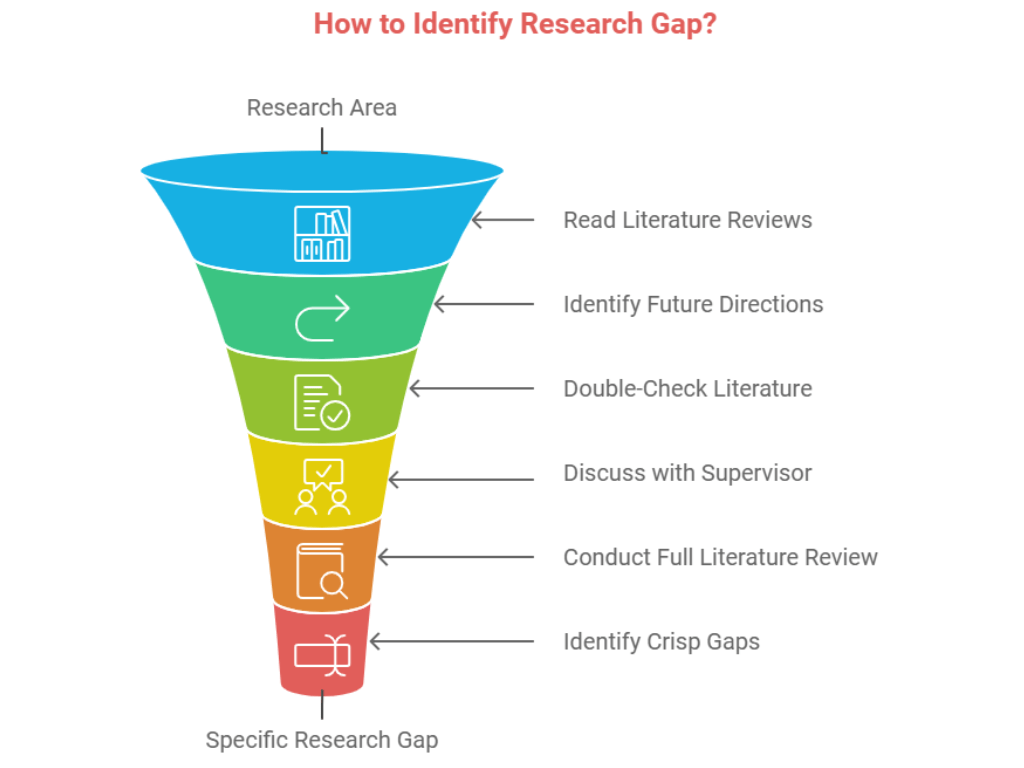
How do you write your PhD thesis to make sure it stands out? If you’ve ever felt unsure about where to start and how to structure your work, you’re not alone. Just look at your friend, John, in the following picture.
He is also overwhelmed with all the stuff about PhD.

Many PhD students learn through trial and error. To save you the confusion and unnecessary stress, this guide will walk you through every step of the process. Think of it as your blueprint for PhD thesis success.
Writing a thesis is one of the most significant milestones in your academic journey. Whether you’re starting from scratch or revising your draft, having a solid framework can save you a lot of time. Here are the eight sections that make up a well-structured thesis.

1. Abstract
The abstract is your thesis in a nutshell. It’s the first thing readers read but often the last thing you will write. So, it should summarize the most important aspects of your research in a way that grabs attention. It should also be concise and informative to maximize impact. Make sure your abstract answers these key questions:
• What motivated this research, and why is it important?
• What problem does it address, and how?
• What are the main findings and their implications?
Pro Tip: Write your abstract last. It’s easier once everything else is in place
2. Introduction
Introduction sets the tone for your thesis. It’s your chance to make a strong first impression. Start by outlining your research problem and explaining why it matters. Your introduction should make it clear what the reader will gain from your thesis and establish its importance in the field.
Here’s how to structure it:
• Begin by outlining the bigger research problem.
• Show what’s missing in the current literature.
• Clearly state the question your thesis addresses.
• Present your research objectives.
• Briefly describe the structure of the thesis.
Pro Tip: Make it engaging. A well-written introduction captures attention and sets the tone.
3. Literature Review
The literature review is your chance to position your work within the broader academic context. It shows how your work builds on what’s already been done. Start by summarizing the most relevant studies and identifying gaps in the literature that your work aims to address.
Key points to include:
• Demonstrate your field understanding by discussing key papers.
• Identify gaps in current knowledge.
• Position your research to show how it addresses these gaps.
Pro Tip: Group similar studies together and provide critical insights, rather than listing papers one by one.
Do you want to receive feedback on each chapter of your thesis?
Receiving feedback and then incorporating the feedback significantly improves your thesis before submission.
For this, try ReviewMyPaper.
➟ This tool will identify the strengths and weaknesses in your chapter.
➟ You can then address the weaknesses to improve your overall thesis.
➟ This tool will also score your chapter from 1-10 based on its quality.
| Check it out here: www.reviewmypaper.tech |
4. Methodology
Methodology is where you will explain how you conducted your research. You need to be clear and detailed, so others can replicate your study if needed. You should also explain why your methodology was the best fit for your research.
Key points to include:
• A description of research design and data collection methods.
• An explanation of data analysis.
• A discussion of limitations and how they were addressed.
Pro Tip: Be concise yet thorough. Provide enough detail to ensure transparency without overwhelming the reader.
5. Key Findings
Key findings section presents the core outcomes of your research, directly answering your research questions.
Highlight the following:
• The most significant findings of your research.
• How these findings relate to your research questions or hypotheses.
• Data presented clearly and concisely using tables, graphs, or charts
Pro Tip: Be selective. Focus on findings that directly address your research objectives.
6. Additional Results
Supplementary data and observations go here. These results support your key findings and add context to your research.
Pro Tip: Use appendices for raw data or lengthy tables to keep this section concise.
7. Conclusion
The conclusion ties your thesis together. Here, you summarize your main findings and discuss the implications of your work.
Key sections to include:
• A summary of your key findings and their impact.
• How your work addresses the initial research problem.
• A memorable closing statement.
Pro Tip: Keep it short and impactful. A well-crafted conclusion leaves a lasting impression.
8. Future Research:
The final section of your thesis is all about exploring what comes next. Here, you suggest areas where further research could be done and discuss how your work opens doors to new questions.
Key points to include:
• Identify gaps that remain unaddressed by your research.
• Propose potential research directions or questions.
• Highlight how your work lays the foundation for future studies.
Pro Tip: Frame your suggestions positively, focusing on opportunities rather than limitations.
Quick Tips for Success
1. Start early: Don’t expect to write a perfect thesis on the first try. Editing is key.
2. Plan with your supervisor: Work with your thesis advisor to plan the structure and format. Be prepared to rewrite sections.
3. Make your writing interesting: Academic writing doesn’t have to be dry. Aim for clarity and engagement.
4. Write non-linearly: Don’t feel obligated to work on chapters in sequence. Write the methods and findings chapters first, then literature review and finally the introduction.
5. Take breaks: Write a first draft and step away for a few days. Return with fresh eyes to spot errors.
6. Organize your references: Use tools to manage citations and ensure they’re in the correct format.
7. Avoid accidental plagiarism: Check your work for proper referencing and avoid plagiarism throughout the process.
8. Edit relentlessly: Grammar, flow, and structure matter. Refine your work repeatedly.

Final Thoughts
Your PhD thesis reflects your expertise and dedication. By following this guide, you’ll structure your thesis in a way that’s clear, compelling, and impactful.
Please share your thoughts related to this article in the comments.

Things you don’t want to miss!
1. Missed my new video, “10 Simple Ways to 10x Your PhD Productivity?” Don’t worry—you can watch the full session on my YouTube channel! Click here to dive into practical tips that will help you work smarter, stay focused, and make progress like never before.



